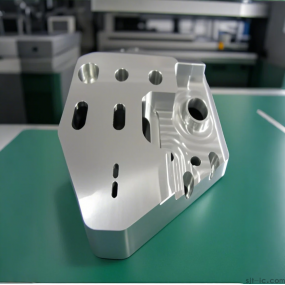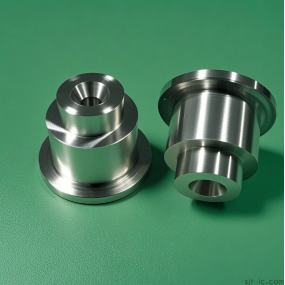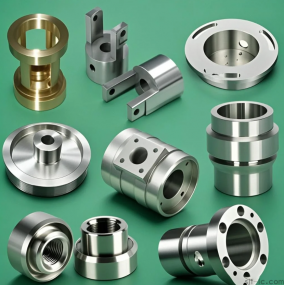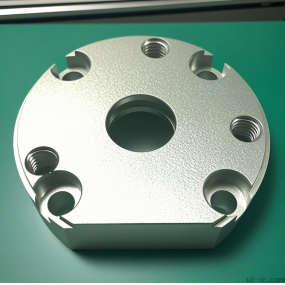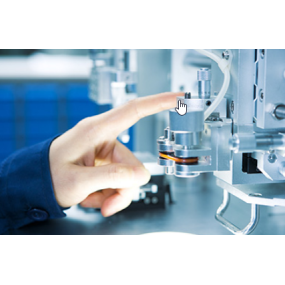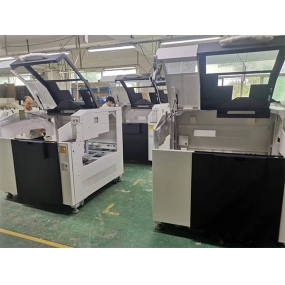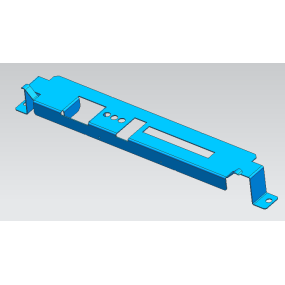Five axis CNC Machining is a high-precision and high-efficiency machining technology widely used in aviation, aerospace, automotive, and other high-tech industries. With the continuous development of technology, the application scope of five axis machining will continue to expand. Five axis CNC machining can improve work efficiency in various ways, mainly including the following aspects: 1. Optimizing machining paths: By planning the tool's movement path reasonably, reducing idle stroke and unnecessary adjustments, machining efficiency can be significantly improved. The methods for optimizing paths include using CAM software for path simulation and optimization, as well as reducing cutting time and tool wear by adjusting cutting parameters and tool angles.  2. Choose high-performance tool materials: Choosing tool materials suitable for processing can reduce tool wear and damage, improve tool life, and thus increase processing efficiency. For example, using high-performance tool materials such as hard alloys and ceramics can achieve efficient machining at high cutting speeds. 3. Realize rapid tool change: By designing a rapid tool change system, the tool can be quickly changed, reducing auxiliary time and improving machining efficiency. The rapid tool changing system can be achieved through automated robotic arms or pneumatic grippers. 4. Realize multi axis linkage machining: Multi axis linkage machining can simultaneously control the movement of multiple axes, achieving efficient machining of complex geometric shapes. By reasonably setting the parameters of multi axis linkage machining, machining time and tool wear can be reduced, and machining efficiency can be improved. 5. Implementing automated machining: By integrating machining programs with CNC systems, automated machining can be achieved, reducing manual intervention and operation time, and improving machining efficiency. Automated processing can also be achieved through auxiliary equipment such as robot technology and automated fixtures. 6. Optimizing cutting parameters: Reasonable setting of cutting parameters can balance cutting efficiency and cutting quality, thereby improving machining efficiency. The methods for optimizing cutting parameters include determining the optimal combination of cutting parameters through experiments and experience, and using intelligent optimization algorithms for adaptive adjustment of cutting parameters.
2. Choose high-performance tool materials: Choosing tool materials suitable for processing can reduce tool wear and damage, improve tool life, and thus increase processing efficiency. For example, using high-performance tool materials such as hard alloys and ceramics can achieve efficient machining at high cutting speeds. 3. Realize rapid tool change: By designing a rapid tool change system, the tool can be quickly changed, reducing auxiliary time and improving machining efficiency. The rapid tool changing system can be achieved through automated robotic arms or pneumatic grippers. 4. Realize multi axis linkage machining: Multi axis linkage machining can simultaneously control the movement of multiple axes, achieving efficient machining of complex geometric shapes. By reasonably setting the parameters of multi axis linkage machining, machining time and tool wear can be reduced, and machining efficiency can be improved. 5. Implementing automated machining: By integrating machining programs with CNC systems, automated machining can be achieved, reducing manual intervention and operation time, and improving machining efficiency. Automated processing can also be achieved through auxiliary equipment such as robot technology and automated fixtures. 6. Optimizing cutting parameters: Reasonable setting of cutting parameters can balance cutting efficiency and cutting quality, thereby improving machining efficiency. The methods for optimizing cutting parameters include determining the optimal combination of cutting parameters through experiments and experience, and using intelligent optimization algorithms for adaptive adjustment of cutting parameters.
Hello! Welcome to EMAR's website!
 English
English » »
» »
 Spanish
Spanish Arabic
Arabic French
French Portuguese
Portuguese Belarusian
Belarusian Japanese
Japanese Russian
Russian Malay
Malay Icelandic
Icelandic Bulgarian
Bulgarian Azerbaijani
Azerbaijani Estonian
Estonian Irish
Irish Polish
Polish Persian
Persian Boolean
Boolean Danish
Danish German
German Filipino
Filipino Finnish
Finnish Korean
Korean Dutch
Dutch Galician
Galician Catalan
Catalan Czech
Czech Croatian
Croatian Latin
Latin Latvian
Latvian Romanian
Romanian Maltese
Maltese Macedonian
Macedonian Norwegian
Norwegian Swedish
Swedish Serbian
Serbian Slovak
Slovak Slovenian
Slovenian Swahili
Swahili Thai
Thai Turkish
Turkish Welsh
Welsh Urdu
Urdu Ukrainian
Ukrainian Greek
Greek Hungarian
Hungarian Italian
Italian Yiddish
Yiddish Indonesian
Indonesian Vietnamese
Vietnamese Haitian Creole
Haitian Creole Spanish Basque
Spanish Basque


